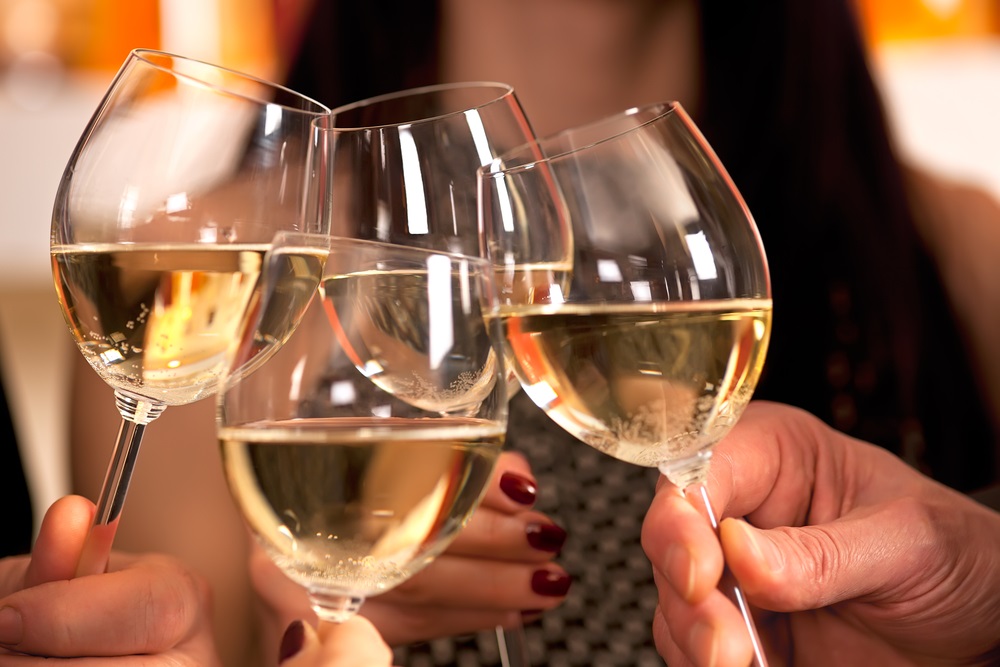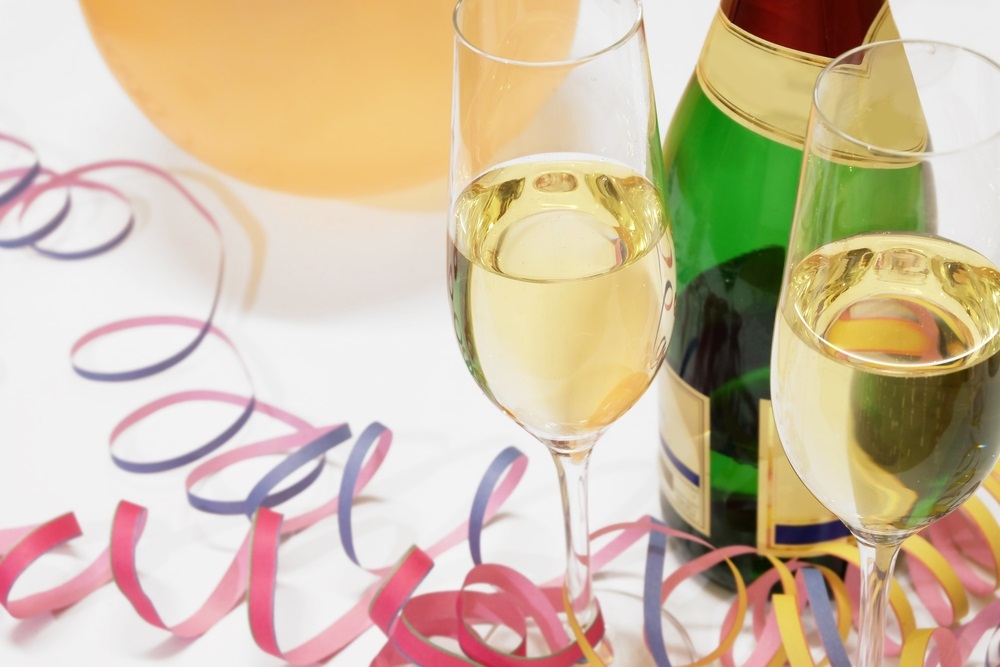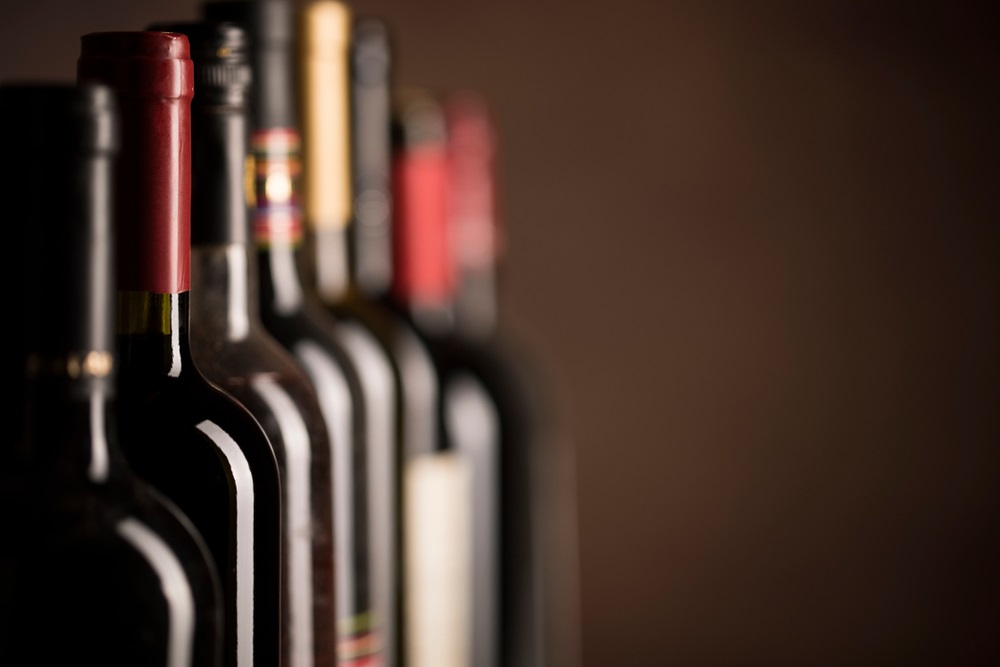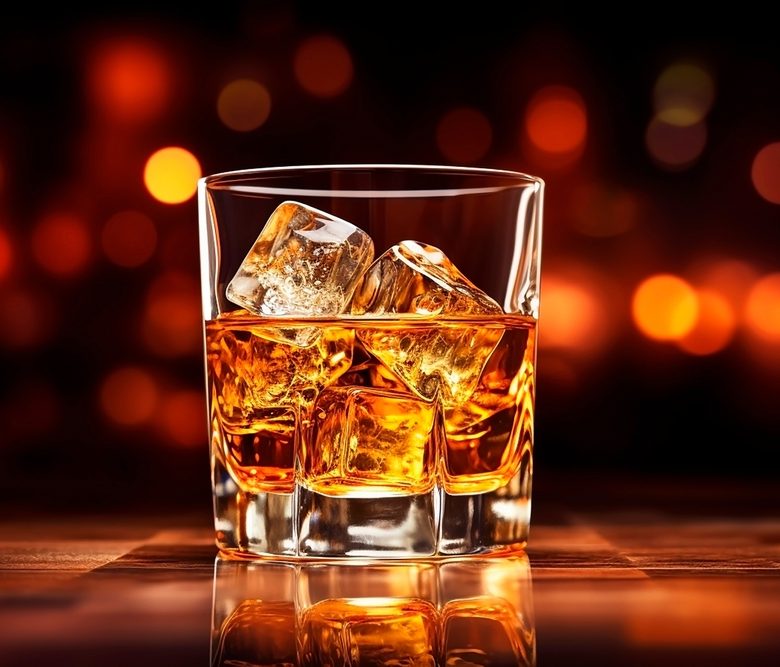How Many Glasses of Wine in a Bottle? – The Premium Selection
There’s nothing quite like the clinking of glasses filled with velvety wine, bringing people together and adding an air of sophistication to any occasion. Wine has long been celebrated as a delightful companion to meals, celebrations, and quiet evenings.
Whether you’re a seasoned wine connoisseur or simply enjoy the occasional glass, understanding the quantity and the number of glasses wine per bottle it can yield is essential.
“How many glasses in a bottle of wine?” This seemingly simple query leads to a fascinating exploration of wine bottle sizes, a bottle of wine standard drinks servings, pouring techniques, and more.
In this article, we will explain wine bottle sizes, and standard servings, and explore how different types of wine affect the number of glasses in bottle wine you can pour. So, let’s raise our glasses and embark on this grape-filled journey!
How Big Is a Typical Bottle of Wine?
Before diving into the specifics, it’s essential to understand the size of a standard wine bottle. Wine bottles come in a range of sizes, each with its unique name and capacity. To understand the number of glasses wine per bottle, it’s important to familiarize yourself with these sizes.
Typically, a wine bottle holds 750ml or 25 ounces of wine. This uniformity in bottle size provides a consistent reference point when discussing servings and portions.
How Many Glasses Of Wine In A Bottle?
Before we delve deeper into the number of glasses wine per bottle, let’s define what constitutes a standard serving of wine. To determine the number of glasses of wine per bottle, it’s essential to consider the standard serving size. A bottle of wine standard drinks serving is generally considered to be 5 ounces (150 ml).
Now let’s answer the question, “How many glasses of wine in a 750 ml bottle?”
A standard 750 bottle of wine ml of wine will yield around 5 glasses of wine, using the above measure. This ensures that the flavours and aromas of the wine can be fully appreciated without overwhelming the palate.
How Many Glasses of Wine Per Bottle in a Standard Serving?
Now, let’s break it down further. With a standard serving of 5 fluid ounces, a 750 ml wine bottle will provide 5 glasses of wine per bottle. However, keep in mind that individual preferences and pouring techniques can vary.
Understanding the bottle of wine standard drinks serving size is crucial for responsible consumption. A standard serving is 5 ounces, which allows you to savour the flavours and nuances of the wine without overindulging.
How Many Glasses of Wine in a Dessert Wine Bottle?
Dessert wines, known for their richness, often come in small bottles of wine due to their concentrated flavours. Dessert wines are known for their higher sweetness. Chilled glasses in bottle wine often accompany after-dinner indulgences.
Since dessert wines are small bottles of wine and enjoyed in smaller quantities, a 375 dessert bottle of wine ml bottle will yield around 2 glasses of wine per bottle, based on a standard serving size.
How Many Glasses of Wine Are in a Bottle of Sparkling Wine?
Sparkling wines add effervescence to our celebrations. Sparkling wine, with its effervescence and celebratory appeal, comes in various bottle sizes. A standard 750 ml bottle of sparkling wine can provide approximately 6 glasses wine per bottle, considering a 5 fluid ounce serving.
Exploring Wine Bottle Sizes and Their Suitability for Occasions
Wine bottles come in different sizes, each serving a particular purpose and occasion. Let’s take a closer look at the various wine bottle sizes.
Type of Bottle | Bottle Size | Number of Servings | Suitability for Occasion |
Piccolo or Split | 187.5 ml | 1-2 | Personal gift or single-serve option |
Demi or Half | 375 ml | 2-3 | Intimate gatherings or picnics |
Standard | 750 ml | 4-6 | Dinner parties or casual get-togethers |
Magnum | 1.5 L | 8-12 | Larger celebrations or wine cellaring |
Double Magnum | 3 L | 16-24 | Special occasions or aging wines |
Jeroboam | 3.75 L | 20-30 | Festive events or large parties |
Methuselah or Imperial | 6 L | 32-48 | Grand celebrations or wine collectors |
Salmanazar | 9 L | 48-72 | Prestigious gatherings or wine aficionados |
Balthazar | 12 L | 64-96 | Rare occasions or wine connoisseurs |
Nebuchadnezzar | 15 L | 80-120 | Extraordinary events or wine enthusiasts |
Solomon or Melchior | 18 L | 96-144 | Exceptional celebrations or collectors |
Midas | 30 L | 160-240 | Legendary affairs or special commissions |
How Do Wines Age In Different Bottle Sizes?
The aging process of wine can be influenced by the bottle size. Larger bottles generally allow for slower and more controlled maturation, leading to more complex and developed flavours.
Here’s a table summarizing how wines age in different bottle sizes:
Bottle Size | Aging Potential |
Standard | Standard aging potential |
Magnum | Slower and more balanced aging |
Jeroboam | Slower aging develops complexity |
Methuselah | Extended aging, greater depth of flavours |
Salmanazar | Very slow aging, more pronounced nuances |
Balthazar | Extended aging, exceptional development |
Nebuchadnezzar | Exceptional aging, unparalleled refinement |
Solomon | Rare aging, the remarkable evolution |
Midas | Legendary aging, extraordinary transformation |
Do Different Bottle Shapes Have the Same Amount of Wine?
While wine bottle shapes can vary for aesthetic and regional reasons, the amount of wine inside remains relatively consistent. Regardless of the bottle’s shape, the standard 750 ml volume is maintained. Here’s a table highlighting the various bottle shapes and their respective wine quantities:
Bottle Shape | Wine Quantity |
Bordeaux | 750 ml |
Burgundy | 750 ml |
Rhône | 750 ml |
Champagne | 750 ml |
Alsace | 750 ml |
Mosel | 750 ml |
Chianti | 750 ml |
Hock | 750 ml |
Unveiling the Different Wine Glass Sizes
To fully appreciate the aromas, flavours, and nuances of wine, choosing the right glass is essential. The size of the wine glass can influence the aroma, flavour, and overall wine-drinking experience.
Wine glasses come in various sizes, each designed to enhance specific wine characteristics and create an enjoyable drinking experience.
Glass Type | Ideal Wine | Description |
Standard Red Glass | Full-Bodied Reds | Showcases complex aromas and bold flavours of red wines like Cabernet Sauvignon and Syrah. |
Standard White Glass | Crisp Whites | Preserves delicate aromas and flavours of white wines such as Sauvignon Blanc and Chardonnay. |
Bordeaux Glass | Bordeaux Blends | Perfect for red wines with a higher tannin structure, like Bordeaux blends. |
Burgundy Glass | Pinot Noir | Highlights delicate nuances of Pinot Noir, accentuating its aromas with maximum oxygen exposure. |
Champagne Flute | Sparkling Wines | Showcases effervescence and elegance of sparkling wines like Champagne and Prosecco. |
Port/Sherry Glass | Fortified Wines | Ideal for sipping fortified wines like Port and Sherry, concentrating their aromas. |
How Many Fluid Ounces in a Wine Glass?
Standard wine glass holds around 5 ounces. However, Wine glasses come in various sizes, and their fluid ounce capacity can vary.
Here’s a table outlining the ounces in wine glasses:
Glass Type | Quantity |
Standard Red | 16-20 oz |
Standard White | 8-12 oz |
Bordeaux | 20-22 oz |
Burgundy | 22-24 oz |
Champagne Flute | 6-8 oz |
Port/Sherry | 2-4 oz |
Discovering the Different Wine Pours
When it comes to wine pouring, different styles can enhance the tasting experience. Let’s explore a few common weight wine bottle pour styles:
Wine Pour Style | Description |
Standard Pour | A standard pour fills the glass to its widest point. |
Tasting Pour | A tasting pour is a smaller amount, allowing for sampling. |
Half Pour | A half-pour fills the glass halfway, ideal for tastings. |
Full Pour | A full pour fills the glass to its rim. |
Gentle Pour | A gentle pour is used for delicate wines or older vintages. |
Mastering the Art of Pouring a Glass of Wine
Pouring wine is an art form that requires precision and technique. Follow these steps to achieve the perfect pour:
- Hold the weight wine bottle by the base, ensuring stability and control.
- Tilt the glass slightly to a 45-degree angle.
- Gently pour the wine along the inside edge of the glass to prevent excessive aeration.
- As the glass fills, gradually straighten it to a vertical position.
- Leave a small space at the top to allow for aromatics and prevent spills.
Calculating the Right Amount of Wine Per Person
When hosting an event or gathering, it’s important to calculate the right amount of wine per person to ensure everyone’s enjoyment. The following factors can help you determine the quantity:
- Duration of the event
- Number of guests
- Drinking preferences
- Availability of other beverages
To ensure you have enough wine for your guests, use this table to calculate the number of glasses of wine per bottle needed based on the number of guests:
Number of Guests | Total Wine Quantity |
4 | 1 bottle |
8 | 2 bottles |
12 | 3 bottles |
16 | 4 bottles |
Consider using the table below as a guideline for estimating the quantity of wine per person:
Event Type | Amount of Wine Per Person |
Wine Tastings | 2-3 ounces |
Dining Out | 1-2 glasses |
Wine/Cheese Tastings | 2-3 ounces of wine per pairing |
Dinner Parties | 2 bottles per 3 people |
Simple Meals/Luncheons | 1 glass per person |
Home Consumption | Personal preference |
Perfect Wine Quantities for Different Occasions
Tailoring wine quantities to specific occasions ensures that you have enough to go around without wastage or shortages. Use the table below as a general guideline for various occasions:
Occasion | Wine Quantity |
Casual Gatherings | 1 bottle per 4-6 guests |
Special Celebrations | 1 bottle per 2-3 guests |
Large Parties | 1 bottle per 3-4 guests |
Formal Dinners | 1 bottle per 2 guests |
Wine and Cheese Tastings | 1 bottle per 4-6 guests |
Simple Meals and Luncheons | 1 bottle per 3-4 guests |
Wine Pairing Dinners | 1 bottle per course per 2 guests |
Outdoor Picnics | 1 bottle per 2-3 guests |
Savouring Dessert Wine: A Sweet Finale to Your Meal
When it comes to ending a meal on a high note, dessert wines are the cherry on top. These sweet elixirs pair perfectly with desserts or can be enjoyed on their own as a delightful treat. So, sit back, relax, and let’s indulge in the world of dessert wines!
Dessert Wine Serving Recommendations
Dessert Wine | Serving Size | Ideal Pairings |
Sauternes | 2-3 ounces | Crème brûlée, foie gras |
Port | 2-3 ounces | Dark chocolate, blue cheese |
Late Harvest Riesling | 3-4 ounces | Apple pie, cheesecake |
Ice Wine | 2-3 ounces | Tropical fruit, rich cheeses |
Moscato d’Asti | 4-5 ounces | Fresh fruit, light pastries |
Ensuring a Well-Stocked Wine Collection
Building a well-stocked wine collection is rewarding. Whether you’re a connoisseur or an occasional wine drinker, curating a collection of diverse wines allows you to explore different regions, vintages, and grape varieties.
Remember, building a wine collection is a personal journey. Let your tastes and preferences guide your selections, and don’t be afraid to experiment and try new wines. A wide selection of glasses in bottle wine allows perfect meal pairings.
Here are some tips to help you ensure a well-stocked wine collection:
1. Spice it Up with Variety
Don’t be a one-note wonder. Embrace the kaleidoscope of flavours by curating wines from different regions and grape varietals. From the bold reds of Tuscany to the crisp whites of New Zealand, let your collection sing a symphony of taste.
This diversity will enable you to experience the unique characteristics and flavour profiles that different wines offer. Consider including red, white, rosé, and sparkling wines in your collection.
2. Consider Aging Potential
Time is a wine’s best friend, turning it into a velvety elixir of delight. If you’re interested in building a collection that includes mature vintages.
Choose wines with aging potential, like a patient collector waiting for their moment to shine. Research the ideal aging timeframes for the wines you select.
Reds like Cabernet Sauvignon and Tempranillo love the slow dance with time, rewarding your patience with depths of flavour. Also, Reds such as Bordeaux blends, and Barolos are known for their aging potential.
3. Explore New Wine Regions
Expand your vinous horizons. Don’t limit yourself to wines from only one or two regions. Explore wines from different parts of the world, such as France, Italy, Spain, California, Australia, and South Africa. Each region has its winemaking traditions, grape varieties, and unique terroirs that contribute to the diverse range of flavours and styles.
Discover hidden gems from lesser-known wine regions or embark on a global wine-tasting adventure. From the sun-kissed hills of Argentina to the rugged beauty of the Rhône Valley, let your taste buds embark on a sensory escapade.
4. Set a Budget
Determine your budget for building your wine collection. Keep your budget in check while seeking vinous delights. Wine comes in all price ranges, so set your spending limits wisely. There’s a world of affordable treasures waiting to be uncorked alongside the more illustrious offerings.
5. Storage Conditions
Proper storage is crucial for preserving the quality of your wines. Treat your wines like the delicate darlings they are. Provide them with a cozy home.
Consider investing in a wine refrigerator or cellar that maintains a consistent temperature, humidity, and protection from light. Store wines horizontally like a well-deserved siesta, to ensure those corks stay moist and prevent them from drying out, so the wine stays happy.
6. Track Your Collection
Keep an inventory of your wine collection. Note the wine’s name, vintage, producer, region, and any other relevant details, creating a map of memories. It’s like being the curator of your wine museum.
This will help you keep track of your wines, ensure proper rotation, and make informed decisions about which bottles to open or age further.
7. Seek Expert Advice
Seek guidance from the sages of the grape. Chat with sommeliers, consult wine experts, and join wine clubs. These wine wizards can unveil hidden treasures and steer you toward vinous epiphanies. Embrace their wisdom while sipping your way to enlightenment. Wine clubs and online communities can also offer valuable insights and opportunities to discover new wines.
8. Attend Wine Events
Attend wine tastings, festivals, and events in your area. These gatherings provide opportunities to taste a variety of wines, expand your knowledge, and network with other wine enthusiasts. You may discover new wines and vineyards that pique your interest. Discover new flavours, make friends, and soak up the magic of swirling, sniffing, and sipping.
Fun Fact: Australia’s Unique Wine Labeling System
Say goodbye to the traditional ” glasses of wine per bottle” confusion and embrace the Aussie way of counting your servings.
In Australia, wines are required to list the number of servings based on the alcohol content. This information provides a clearer understanding of the wine’s potency and allows for responsible consumption.
Now, imagine strolling down the wine aisle, eyeing that bottle of Shiraz or Chardonnay, and spotting a label that says, “Four servings, you legend!” or “Aussie rules: Seven servings of fun!” It’s a playful reminder to pace yourself or get ready to have a ripper of a time.
The Final Bouquet
In conclusion, “How many glasses wine in bottle?” has been answered in detail. Understanding the number of glasses of wine per bottle, wine bottle sizes, pouring techniques, and suitable wine quantities for different occasions enhances your wine knowledge and enjoyment.
By exploring wine measurements, you’ll be able to appreciate the artistry behind each glass of wine you pour. We are sure you will no longer wonder, “Bottle of wine how many glasses will it fill?”
The Cellar’s Finest || Handpicked Wines for Discerning Palates
For Those Seeking The Crème De La Crème Of Wines
Premium Selection offers a curated collection of the finest wines from around the globe. From renowned vineyard treasures to rare vintages, they provide an exceptional experience for wine connoisseurs and enthusiasts alike.
Premium Selection || Explore Our Premium Wine Selection






